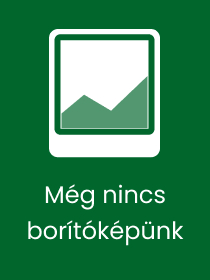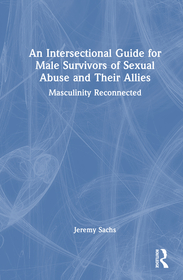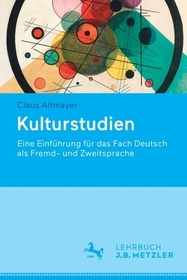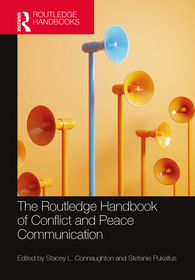
The Routledge Handbook of Conflict and Peace Communication
Sorozatcím: Routledge Handbooks in Communication Studies;
-
10% KEDVEZMÉNY?
- A kedvezmény csak az 'Értesítés a kedvenc témákról' hírlevelünk címzettjeinek rendeléseire érvényes.
- Kiadói listaár GBP 215.00
-
102 716 Ft (97 825 Ft + 5% áfa)
Az ár azért becsült, mert a rendelés pillanatában nem lehet pontosan tudni, hogy a beérkezéskor milyen lesz a forint árfolyama az adott termék eredeti devizájához képest. Ha a forint romlana, kissé többet, ha javulna, kissé kevesebbet kell majd fizetnie.
- Kedvezmény(ek) 10% (cc. 10 272 Ft off)
- Kedvezményes ár 92 445 Ft (88 043 Ft + 5% áfa)
Iratkozzon fel most és részesüljön kedvezőbb árainkból!
Feliratkozom
102 716 Ft

Beszerezhetőség
Becsült beszerzési idő: A Prosperónál jelenleg nincsen raktáron, de a kiadónál igen. Beszerzés kb. 3-5 hét..
A Prosperónál jelenleg nincsen raktáron.
Why don't you give exact delivery time?
A beszerzés időigényét az eddigi tapasztalatokra alapozva adjuk meg. Azért becsült, mert a terméket külföldről hozzuk be, így a kiadó kiszolgálásának pillanatnyi gyorsaságától is függ. A megadottnál gyorsabb és lassabb szállítás is elképzelhető, de mindent megteszünk, hogy Ön a lehető leghamarabb jusson hozzá a termékhez.
A termék adatai:
- Kiadás sorszáma 1
- Kiadó Routledge
- Megjelenés dátuma 2024. október 29.
- ISBN 9781032490489
- Kötéstípus Keménykötés
- Terjedelem466 oldal
- Méret 254x178 mm
- Súly 1040 g
- Nyelv angol
- Illusztrációk 25 Illustrations, black & white; 22 Halftones, black & white; 3 Line drawings, black & white; 6 Tables, black & white 708
Kategóriák
Rövid leírás:
This handbook provides a comprehensive review of research in conflict and peace communication and offers readers a range of insights into foundational, ongoing, and emerging discussions in this field.
TöbbHosszú leírás:
This handbook provides a comprehensive review of research in conflict and peace communication and offers readers a range of insights into foundational, ongoing, and emerging discussions in this field.
The volume brings together peace studies, conflict studies, and communication studies to acknowledge the power of communication—both cooperative, solidarizing, and integrative as well as destructive and divisive—in constituting social relations. It features a multiplicity of authors, including academics and practitioners from all corners of the globe and from across the communicative spectrum. The handbook is divided into four parts: (1) Meta-theoretical, theoretical, and methodological approaches in conflict and peace communication research; (2) Conflict communication; (3) Peace communication; and (4) Cross-cutting and emergent themes.
This handbook is essential reading for scholars, research-driven practitioners, graduate-level students, and upper-level undergraduate students in conflict and peace communication within disciplines such as communication studies, political science, international relations, security studies, and human rights.
TöbbTartalomjegyzék:
Foreword Introduction Part I: Meta-theoretical, Theoretical, and Methodological Approaches in Conflict and Peace Communication 1. Post-positivist approaches to conflict and peace communication research 2. Interpretivist/social constructionist approaches to conflict and peace communication research 3. Critical perspectives on conflict and peace communication research 4. Networks approaches to conflict and peace communication 5. Participatory (action) & community-based research 6. Genocide warning systems: Building capacity for preventing mass atrocities 7. Monitoring journalism safety 8. Connecting evidence to practice: The development of the Better Evidence Project 9. Predictors of armed intergroup-conflicts: An overview of risk factors Part II: Conflict Communication 10. The three communicative dimensions of hate speech 11. The rise of propaganda and disinformation since the First World War 12. Culture wars and hyperpartisan news 13. Bringing conflict back in: Computational propaganda and totalitarian political communication in Brazil 14. Civil actors under attack: Digital authoritarianism and the weaponization of social media 15. Social media as a conflict driver and a tool of participatory conflict communication 16. Extremism, the extreme right and conspiracy myths on social media 17. Aggressive communication online: From familiar anti-women sentiments to misogyny influencers and male supremacism in the manosphere 18. From conflict to collaboration: solidarity and compromise in trans and women’s movements 19. Dehumanising and intimidating imagery in cartoons and caricatures 20. The communication of values through hostile architecture 21. The clash of two sacred values: Freedom of expression versus religious respect Part III: Peace Communication 22. The relevance of communicative peacebuilding: civil norm building and discursive civility 23. The transformative capacity of communication for social change and peacebuilding 24. Peace through the media? A historical outline of the UN’s peace-related media policies and activities 25. Digital media and information literacy 26. The civil global news-scape 27. Exemplifying peaceful cooperation through news journalism 28. Envisioning environmental journalism as a mediating tool in cultural conflict 29. Peace education for deradicalization 30. Building citizens’ values: Peace through sports 31. Youth-led media in refugee camps: From marginalisation to inclusion through young people’s productions 32. Audio-visual media: Documentary filmmaking 33. The value of TV & radio soap opera in peacebuilding 34. Poetry and folktales in peacebuilding 35. Peacebuilding in conflict and post-conflict narratives 36. Peace photography, visual peacebuilding and participatory peace photography 37. Graffiti and street art in peacebuilding 38. The physical and fictional memorialisation of history: Sheffield’s Women of Steel 39. Embodied peacemaking: The role of dance in communicative strategies for conflict mediation and resolution 40. Music in/for peace Part IV: Cross-Cutting and Emergent Themes 41. Freedom to flourish: A systematic review of the literature at the intersection of resilience, communication, and peacebuilding 42. Communicating for well-being: Overlapping principles in peace and health communication 43. Resilience nexus: Climate change, food security, conflict, and peace communication 44. Building a just world through Peace Linguistics: Decolonizing and de-gendering communication
Több
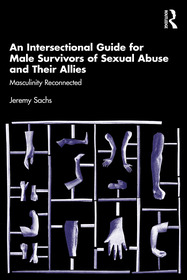
An Intersectional Guide for Male Survivors of Sexual Abuse and Their Allies: Masculinity Reconnected




